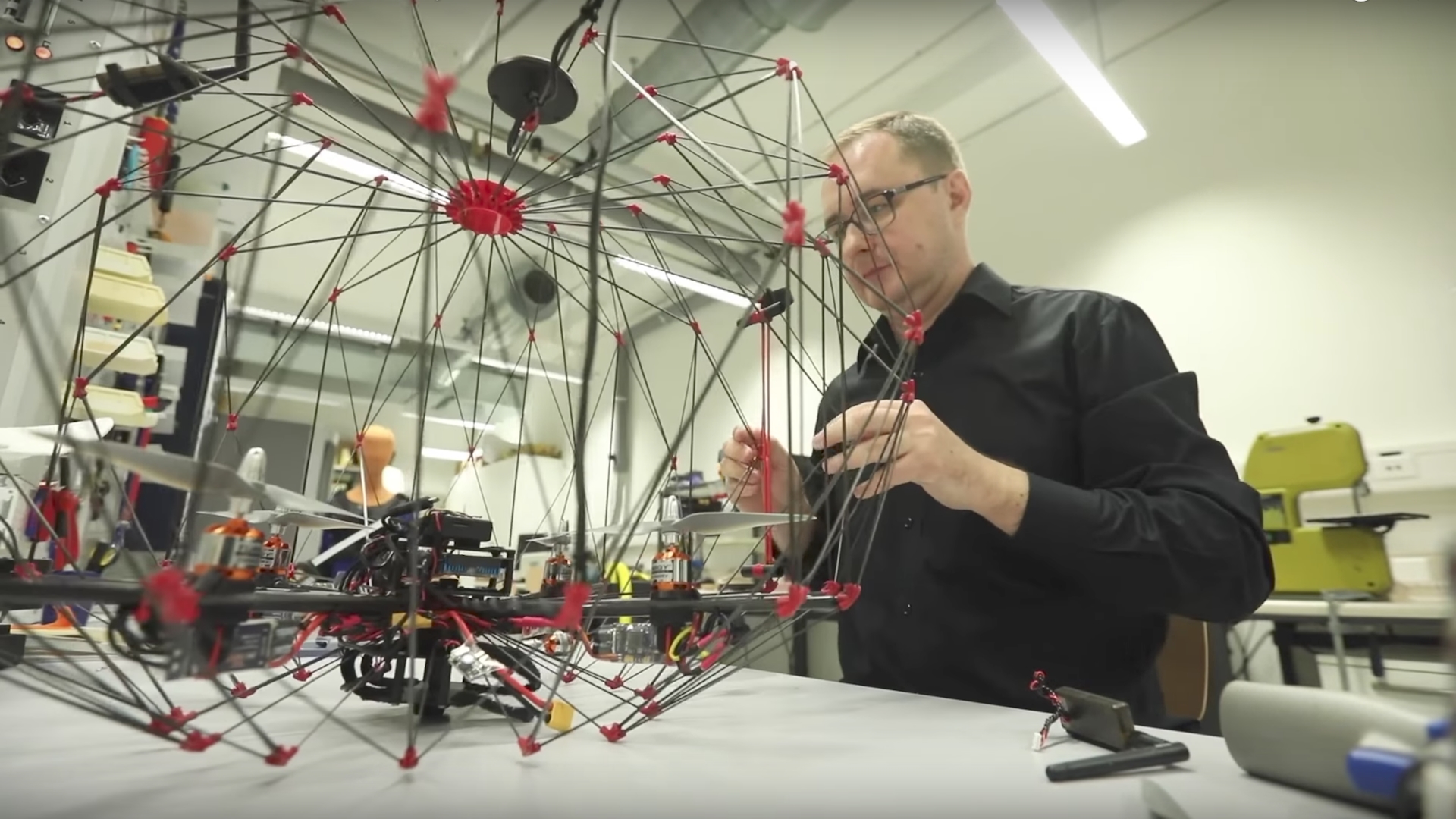

We may earn revenue from the products available on this page and participate in affiliate programs. Learn more ›
Researchers at the École Polytechnique Federale de Lausanne (EPFL) have developed a collapsable drone to deliver packages weighing up to about a pound to tight, “last-centimeter” locations. Essentially, this drone—which is constructed with a collapsable protective cage on its exterior—can avoid obstacles and navigate routes that larger drones can’t.
It wouldn’t be impeded by narrow paths, streets or alleys. In short, if you desperately need a small package delivered, but live in a traditionally narrow street in Milan, an Amazon drone, for instance, may not be able to reach your area due to its size. EPFL’s last-centimeter drone, however, is specifically designed to make it through narrow spaces. Phys.org notes that it could be useful for delivering items such as medicine, first-aid supplies or lightweight consumer products.

The Laboratory of Intelligent Systems at the EPFL partnered with NCCR Robotics to fund the development the easily transportable, collapsable UAV. According to Phys, it’s incredibly compact once this carbon-fiber cage protected drone slips into its case. Conveniently, it can also be caught safely by hand thanks to the protective layer keeping propellers out of reach. Once the drone notices the cage being opened, all rotors come to a stop. The focus here is safety, autonomy, and filling a delivery niche that larger drones are unable to. The little unmanned aerial vehicle is limited to covering about 1.2 miles, however.

Let’s take a look this convenient little delivery drone in action.

According to Phys, the protective cage wasn’t the only thing designed in-house. The EPFL also developed the autonomous flight software it uses. It creates a flightplan, drops off the package and returns to base. Users can, of course, track all of this via smartphone.
“This project is a work in progress. In addition to strengthening its ability to detect and avoid objects, we are exploring possibilities to increase the drone’s payload capacity and enhance its autonomy,” says Przemyslaw Kornatowski, the lead developer. “Throughout the summer, we tested our human-friendly, drone delivery system on the EPFL campus, delivering items to people over 150 test flights,” Kornatowski says.
As we previously reported, a California-based company makes parachutes for drones, so users can breathe a little easier in the face of potential damage if their UAVs fall from the sky. Kornatowski and his team agree with that concept, as their drone comes equipped with a chute, too. We’ll be sure to keep on eye on this delivery drone, and report on any exciting developments.
